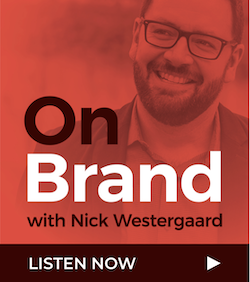Speaking to the right audience is perhaps the single most important component of communication. Why? Because if you’re not communicating with potential customers, members or supporters, you’re wasting time. If you doubt the power or importance of reaching your intended audience, consider the following examples.
First, my inspiration for this blog post came from a recent church service I attended. I know what you’re thinking – I should have been paying better attention to the sermon than analyzing it (that’s what my husband said anyway). The truth is, it was a great speech, just for the wrong audience on the wrong day. The pastor gave a compelling argument for strengthening the foundation of our country and tolerance of both political parties. The only problem – it was Easter Sunday.
Here’s another example – Marcus Sheridan, hailed as a “Web Marketing Guru” by the New York Times and 2013 speaker at Social Brand Forum (have you registered for this year’s yet?), began his business installing swimming pools out of the back of his truck in 2001. Because he knew his audience and didn’t waste time trying to reach people who couldn’t afford his product (fiberglass pools), he was able to overcome the collapse of the housing market and his business, River Pools and Spas, became one of the largest pool installers in the U.S.
Now let’s put you to the test. Imagine you’re running late for work, and back into another vehicle as you exit your driveway. How might the story you share differ from your spouse, to your boss, to your insurance company? Are there some details you would choose to highlight or omit? This illustrates the way we communicate with others and the way we frame our narratives to appeal to difference audiences. It’s something we do without thinking twice in our daily conversations, and a skill we should practice more often in our communication with potential clients.
Let’s walk through a few of the details you’ll want to consider in reaching your audience before you start writing.
Content
Knowing who your audience is allows you to adapt the content of your writing to address their main concerns. Are you writing a report to your local community who has an appreciation for the jobs your company brings to town? Are you writing to inform or to persuade your audience?
Tone
Consider your relationship with the audience. Are you reaching out to colleagues or are you hoping to sell products? Is your product or service serious or light-hearted in nature? These details will impact the tone in which you should address the audience. Remember – even when using humor, always be respectful to your reader.
Find Common Ground
Develop a link between yourself and the audience. To do so, you will have to understand the world from your readers’ perspective. What’s on their mind when they open your email or check Facebook and see your company’s message? Are you talking politics when they want to be encouraged? Find ways to align your message with what the audience already knows, believes, and trusts.
Knowledge
How much knowledge does the reader have of your company or industry? Does the reader have more knowledge or less knowledge than you? Are they familiar with industry jargon? How much background information do you need to provide? This is often a delicate balance in educating the audience, while being mindful of not boring or overwhelming.
Degree of Agreeability
Does your target audience agree or disagree with your viewpoint? Do readers trust and like your products or services? It’s important to identify whether you are reinforcing the reader’s opinion or if you are trying to change their point of view.
Ask
What is the “ask” of your audience? Will the reader be making a purchasing decision or investment after reading your article? Have you included all information necessary for your audience to take the steps you have carefully outlined for them? Is your team prepared if service calls start coming in or products start flying off the shelf? Define a clear direction you want your audience to go.
Here are a few additional questions to consider as you identify and connect with your audience:
- Do you have multiple audiences? If so, can you tailor communication to each? It may help to make a list of all potential audiences.
- What do you want your audience to think, learn, or assume about you? What impression do you want to convey?
- Is your communication timely? Does it correspond with current events?
- Are you being sensitive to the needs of your readers?
- What do you want your audience to understand or do?
- What mode of communication will best support your message the best — e-mail, letter, blog, social media or mailer?
- What format or layout will appeal to the audience and support the message?
Now that you have a better understanding of how to reach your target audience, put it to the test and gauge their reactions. You won’t be disappointed!









